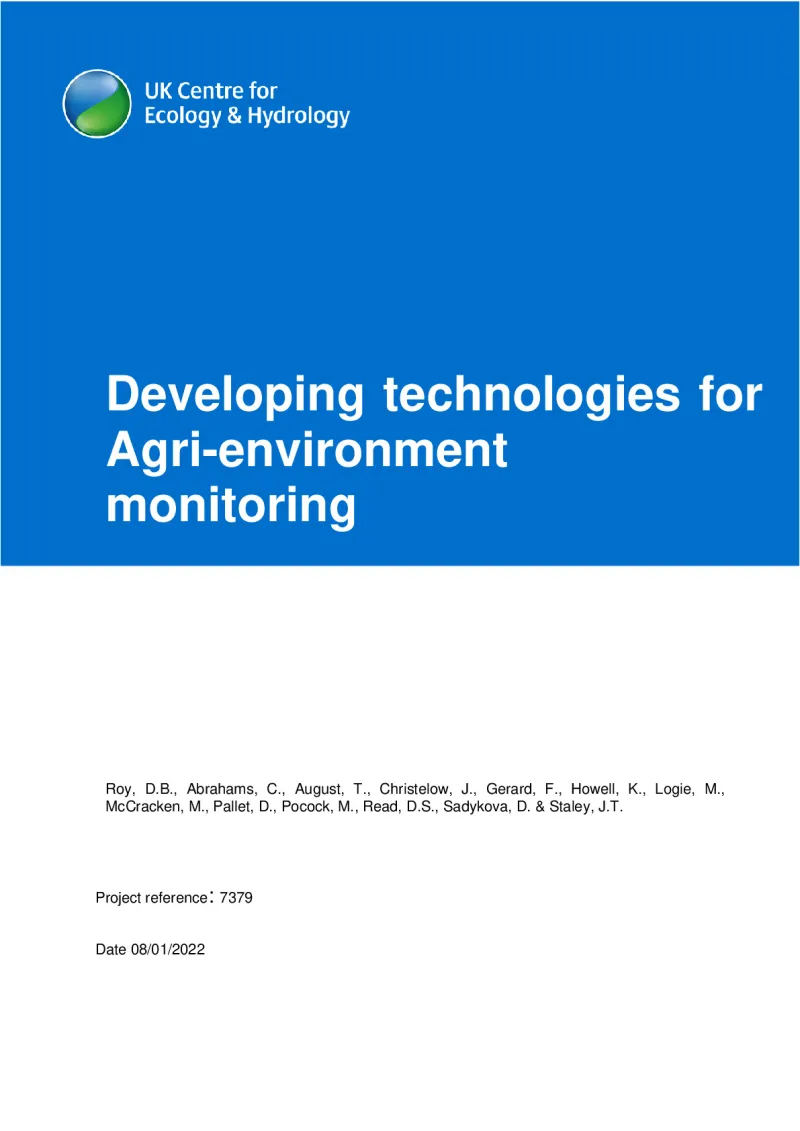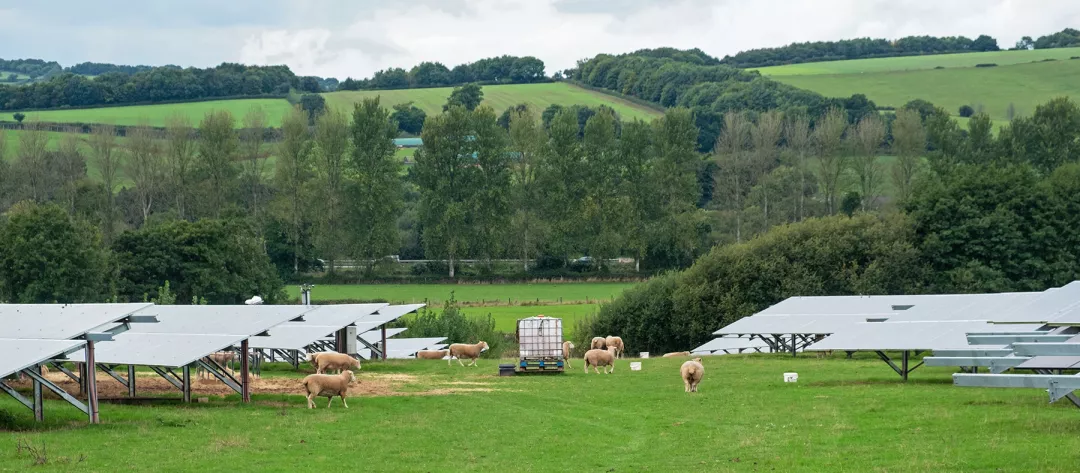Developing technologies for agri-environment monitoring
This report focuses on technologies with the greatest potential to deliver enhanced and more cost-effective monitoring of environmental ‘outcomes’ of direct land management and interventions.
- Other
- 2014-2022
- Environmental impacts


The focus of the report is on technologies that deliver enhanced and more cost-effective monitoring of environmental outcomes of direct land management and interventions supported by the Environmental Land Management Scheme (ELMS). The technology areas covered by this project are bioacoustics, DNA methods, Earth observation, computer vision and machine learning.
For each technology area, the following objectives were considered: a) carry out horizon scanning of developing technologies which may be relevant for agri-environment monitoring; b) review how these developing technologies could be used for agri-environment monitoring; c) review what outputs/outcomes are relevant for the developing technology; d) propose how developing technologies could be used in existing and future agri-environment monitoring; and e) pilot or proof of concept studies to demonstrate how technology could be used for agri-environment monitoring.
The method was based on a needs assessment that scanned the technology horizon. This included consulting key stakeholders to understand their needs when developing technologies and potential barriers to uptake.
The suitability of each technology was assessed against key monitoring requirements. For each monitoring variable, technologies were categorised as to whether they provide species-level identification, presence/absence, abundance or a measure different from traditional ones. For each technology and monitoring requirement, a score was given to its suitability in five or ten years’ time.
Two main limitations have been highlighted in the study. Establishing a baseline agreement monitoring sample highlighted some of the challenges associated with assessing new technologies whilst they are still in development, including changing workflows, resulting in less than optimal data for biodiversity assessments.
Furthermore, respondents said that having appropriate counterfactuals can be difficult, limiting the ability to evaluate large-scale schemes. Few sites are monitored repeatedly for long periods and across years, so inter-annual variability can be a problem when interpreting monitoring data. Better baseline assessments before Agri-Environment Schemes (AES) are introduced and the inclusion of broader agri-ecological monitoring were both regarded as valuable, i.e. including factors that are not currently included in AES and sites without AES. There is great taxonomic variation in the degree to which species are monitored, so it would be valuable for targeting species, functions and indicators of a function that are not currently monitored.
Overall, the study demonstrates general support that AES monitoring fulfils its purpose, with nine out of 13 respondents in agreement. At the same time, 14 out of 15 people also agreed that AES monitoring could be improved.
There was consensus amongst respondents that there are barriers that stop AES monitoring from fulfilling its purpose. The barriers that were most frequently cited had to do with knowledge gaps, although human factors regarding communication and lack of willingness were also frequently cited.
The main overall conclusions from the needs assessment consultation were: (1) the need for robust sampling strategies when deploying monitoring techniques, including developing technologies; (2) validation with empirical data is required for developing technologies to interpret what the results mean in terms of AES and the agri-environment; (3) technologies often require training and/or reference data sets which may limit their potential to extrapolate to new areas; and (4) a recognition of the great potential of developing technologies for AES monitoring but noting the need for a cautious approach and to be realistic in their benefits.
The assessment concludes that current AES monitoring cannot be delivered by technology alone, now or within the next ten years. Examples of particular gaps in developing technology are species-level information on hedgerows, species-level data on abundance or populations, soil characteristics and design of agreements. However, technologies can currently offer and deliver several monitoring elements and may also offer novel metrics for biodiversity than traditional approaches.
Author(s)
UK centre for Ecology and Hydrology (UKCEH)